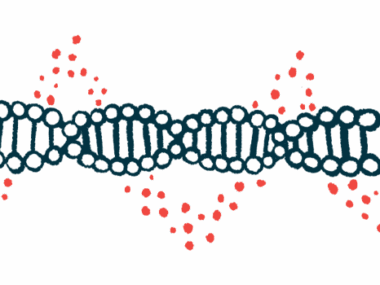Brain Waves Captured by EEG Indicate Cognitive Therapy Benefits
Written by |

Alterations in brain waves, measured using an electroencephalogram (EEG), revealed benefits of cognitive stimulation in Rett syndrome patients, a small study found.
The benefits of cognitive stimulation were greater in younger girls, “highlighting that the younger the therapy is started, the better is the outcome,” the scientists wrote.
The study, “Cognitive stimulation has potential for brain activation in individuals with Rett syndrome,” was published in the Journal of Intellectual Disability Research.
Cognitive therapy, such as using noninvasive brain stimulation, is believed to provide benefits for people with neurological conditions, including Rett syndrome. However, assessing its impact and how such an approach may enhance cognitive performance remains challenging and largely unknown in Rett patients.
In this study, a group of researchers in Spain used EEG to assess the outcomes of cognitive therapy in a group of girls and young women with Rett syndrome.
EEG measures changes in brain waves, the synchronized, electrical pulses used by nerve cells to communicate with each other. This is done by placing electrodes on the scalp, which can then measure electrical activity.
In total, 20 girls (ages 5 to 20), all with MECP2 mutations — the most common cause of Rett syndrome — were included in the analysis. Fourteen of them had a history of epileptic seizures. Most had been treated with anticonvulsants.
They underwent a cognitive task using an eye-tracker designed to evaluate access and choice skills. Participants were seated for about 45 minutes in front of a computer, with a portable eye-tracker that enables its navigation and control by gaze. The cognitive processes targeted by the task are essentially attention, because attention span is severely impaired in Rett patients.
EEG was first recorded with eyes open before starting the test. Participants were then presented a film for seven minutes to relax. This was followed by the actual cognitive task, in which they were engaged to look at a screen and had to focus their eyes on an object for one to two seconds to be successful and receive feedback. In the end, they viewed the film again for 10 minutes.
Results revealed that brain electrical rhythms changed during the cognitive task. The researchers found a decrease in low-frequency delta brain waves and an increase in high-frequency beta brain waves. Beta waves are a sign of an actively engaged mental state, while delta waves are seen in restful states.
Overall, low-frequency waves are associated with disease-related alterations, whereas high-frequency waves have been linked to cognitive functions such as attention, arousal, and object recognition, the scientists said.
The team also found a positive correlation between the Brain Symmetry Index (BSI), a measure of symmetry between both sides (hemispheres) of the brain, and age. Asymmetry between the two hemispheres is commonly associated with neurological diseases and could correlate with impaired ability from one part of the brain to generate EEG rhythms, according to the investigators.
There were greater improvements in symmetry (meaning a lower BSI) when the cognitive therapy began early, from the ages of 5 to 10, as compared with older ages, the researchers found. A statistically significant difference favored changes in BSI in the 5–10 group compared with the older girls and young women, whose age was 16–20 years.
Overall, “this study showed the potential benefits of cognitive stimulation in RS [Rett syndrome] patients, highlighting that the younger the therapy is started, the better is the outcome,” the researchers wrote.
“Significant alterations of brain rhythms were observed during and after cognitive stimulation, suggesting that cognitive stimulation may have effects on brain activity beyond the stimulation period,” they added.
The use of EEG “could add an extra objective measure and be used as a potential biomarker” for efficacy of potential Rett therapies, the scientists wrote.






